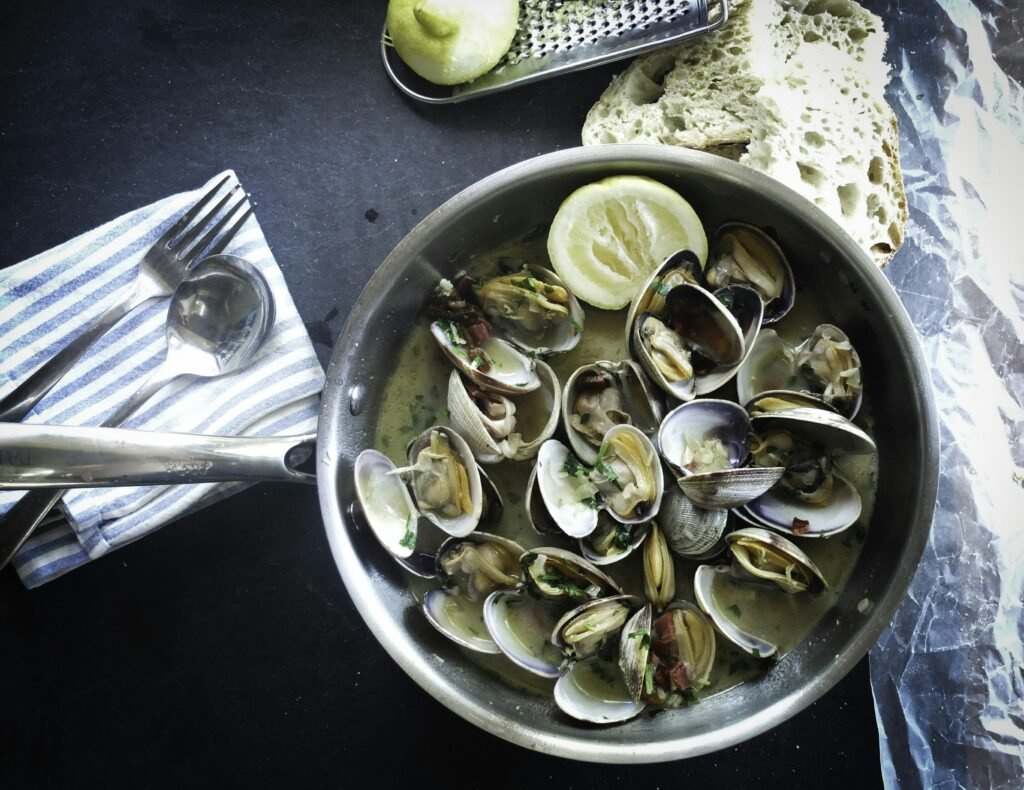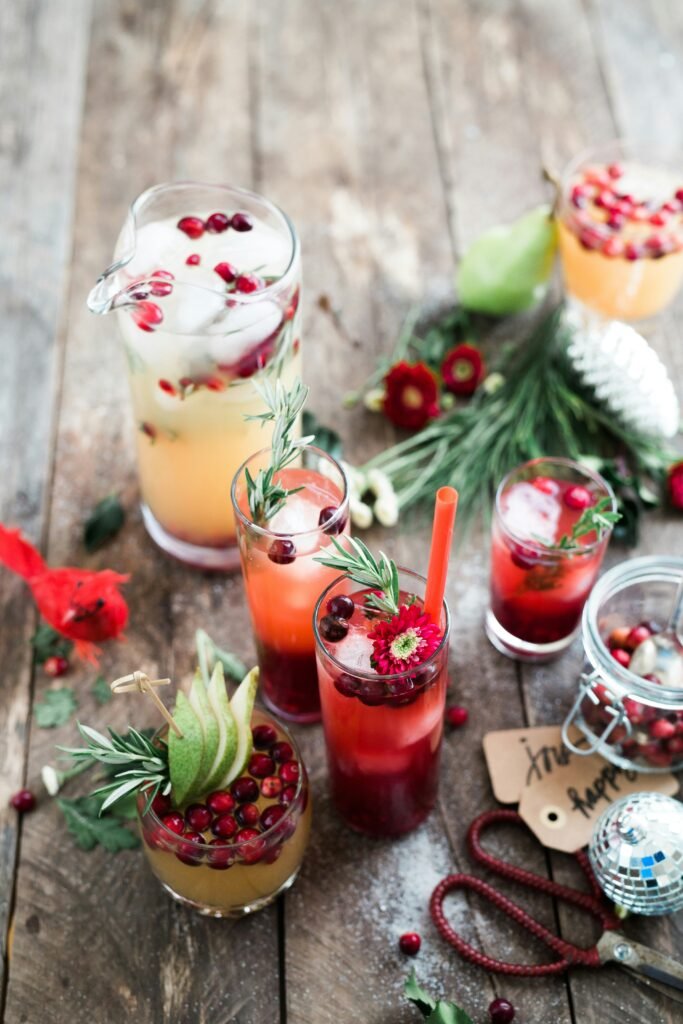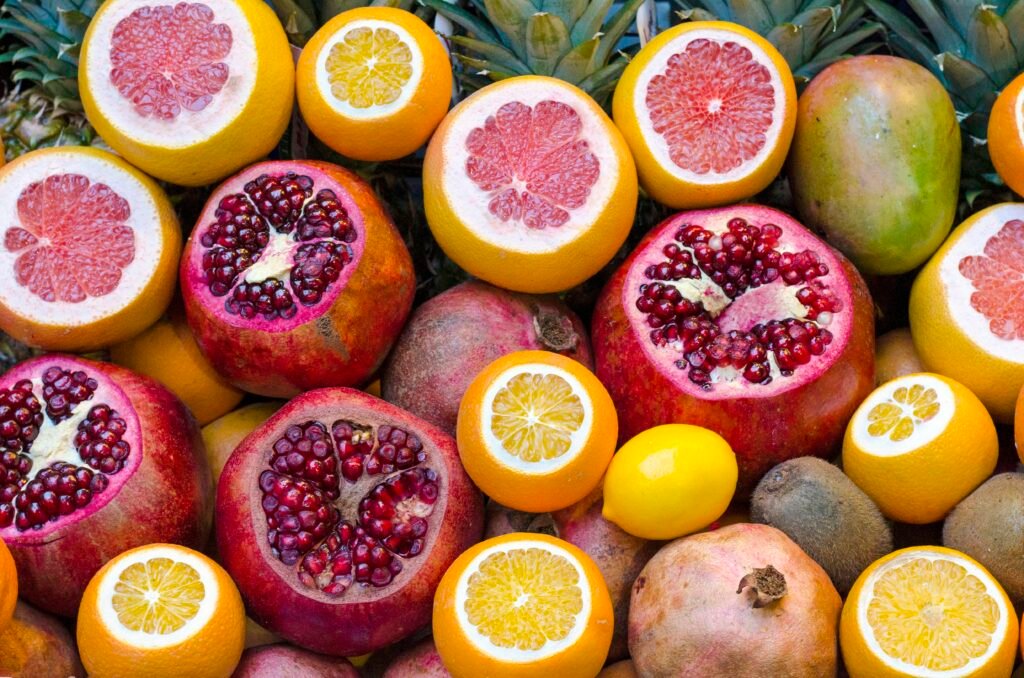Are you tired of dealing with flimsy, low-quality plastic food containers that leak or crack after just a few uses? Look no further! In this comprehensive guide, we will provide you with invaluable tips and insights on how to select high-quality plastic food containers that are not only durable but also safe for your food storage needs. From examining material types to assessing lid seals and considering size options, we’ve got you covered. Say goodbye to frustration and hello to the perfect plastic food containers that will keep your meals fresh and secure.

This image is property of images.unsplash.com.
Material
When selecting plastic food containers, one of the first things you need to consider is the type of plastic they are made from. Different types of plastics have different properties and are suitable for different purposes.
Plastic Types
There are several types of plastic commonly used in food containers. The most common ones include polyethylene (PE), polypropylene (PP), and polyethylene terephthalate (PET). Each has its own benefits and drawbacks.
Polyethylene (PE) is a lightweight and flexible plastic that is often used for disposable food containers. It is durable and resistant to chemicals, making it a suitable choice for storing a wide range of food items.
Polypropylene (PP) is a durable and heat-resistant plastic that is commonly used for reusable food containers. It is microwavable and dishwasher-safe, making it convenient for everyday use. PP containers are known for their strength and can withstand high temperatures without warping.
Polyethylene terephthalate (PET) is a clear and rigid plastic that is commonly used for bottles and containers for beverages and condiments. It is lightweight and has good barrier properties, making it suitable for storing liquids and perishable foods.
Food-Grade Certification
When it comes to plastic food containers, it is important to ensure that they are of food-grade quality. Food-grade plastics are specifically designed to come into contact with food and are safe for storing and packaging consumable items.
Look for containers that have been certified as food-grade by recognized organizations such as the Food and Drug Administration (FDA) or the European Food Safety Authority (EFSA). These certifications indicate that the containers have undergone rigorous testing and comply with strict standards for food safety.
Durability
Durability is another important factor to consider when choosing plastic food containers. You want containers that will last and withstand regular use without cracking, warping, or breaking.
Look for containers that are made from high-quality plastics and have sturdy construction. Reinforced corners and thick walls can contribute to the durability of the containers. Additionally, containers that are labeled as “shatterproof” or “impact-resistant” are more likely to withstand accidental drops and impacts.
It is also worth considering containers that come with a warranty or guarantee from the manufacturer. This is an indication of the manufacturer’s confidence in the durability of their product.
Size and Capacity
The size and capacity of plastic food containers play a crucial role in their usability and practicality.
Portion Control
Containers that are too large for your needs can result in wasted space and unnecessary food waste. On the other hand, containers that are too small may not be able to accommodate the amount of food you want to store or portion out.
Consider your portion sizes and the amount of food you typically store. Look for containers that offer different sizes or compartments to meet your specific needs. Portion control containers with built-in dividers can be especially helpful for meal prepping and portioning out ingredients.
Different Sizes for Different Items
It is also important to consider the variety of food items you typically store. Different types of food require different container sizes.
For example, if you frequently pack sandwiches or salads, containers with a larger surface area may be more suitable. On the other hand, smaller containers with tight-fitting lids are ideal for storing leftover sauces or condiments.
Having a range of container sizes at your disposal allows for greater flexibility and ensures that you always have the right container for the job.
Stackability and Storage
When it comes to plastic food containers, efficient storage is key. Look for containers that are designed to stack neatly together when not in use. This will save valuable cabinet or refrigerator space and make it easier to keep your containers organized.
Containers with nesting lids or those that are designed to fit inside one another when empty are particularly space-saving. Make sure to check the measurements and dimensions of the containers to ensure they will fit in your storage area without taking up unnecessary space.

This image is property of images.unsplash.com.
Closure Mechanism
To keep your food fresh and prevent leaks and spills, the closure mechanism of your plastic food containers is of utmost importance.
Secure Seal
A secure seal is crucial for maintaining the freshness and extending the shelf life of your food. Look for containers with lids that fit tightly and securely onto the base. Containers with locking mechanisms or snap-on lids are generally more secure and less prone to accidental spills.
Pay attention to the design and construction of the lid. Look for containers with airtight seals or silicone gaskets that create a tight barrier against air and moisture.
Leak-Proof Design
Whether you’re packing lunch for work or storing leftover soups and stews, leak-proof containers are essential. No one wants to deal with messy spills in their bag or refrigerator.
Check for containers that explicitly mention being leak-proof or spill-proof. Look for features such as silicone seals or locking mechanisms that provide an extra layer of protection against leaks. Containers with a tight-fitting lid and no gaps or openings are more likely to keep your food safely contained.
Ease of Opening and Closing
While a secure seal is important, it should not be at the expense of convenience. Containers that are difficult to open and close can be frustrating to use, especially when you need quick and easy access to your food.
Look for containers that strike a balance between a secure seal and ease of use. Lids with tabs or grips make opening and closing a breeze, even for those with limited hand strength or dexterity. Containers with a simple, one-handed operation are particularly convenient for on-the-go use.
Microwave and Freezer Compatibility
For maximum convenience and versatility, plastic food containers should be able to withstand both microwave and freezer use.
Heat Resistance
When reheating food in the microwave, it is important that the container can withstand high temperatures without warping or releasing harmful chemicals. Look for containers that are labeled as microwave-safe and can safely withstand the heat generated by microwaves.
Containers made from polypropylene (PP) or high-heat resistant plastics are usually safe for microwave use. These plastics are designed to withstand heat without melting or warping, making them suitable for warming up leftovers or cooking food in the microwave.
Cold Resistance
Similarly, plastic food containers should be able to withstand freezing temperatures without cracking or becoming brittle. Freezer-safe containers are essential for storing leftovers or meal prepped items that you plan to freeze for later use.
Check for containers that are explicitly labeled as freezer-safe or capable of withstanding freezing temperatures. Look for plastics that have good low-temperature impact resistance to ensure they will remain intact and durable in the freezer.
Avoiding Warping and Cracking
Warping and cracking are common issues with plastic containers that are not designed for microwave or freezer use. These issues can compromise the structural integrity of the container, making it less effective in preserving the freshness of your food.
Investing in microwave and freezer-compatible containers will not only save you from the frustration of dealing with warped or cracked containers but also ensure that your food remains safe and uncontaminated.

This image is property of images.unsplash.com.
Transparent and Clear
The transparency and clarity of plastic food containers can greatly enhance their usability and convenience.
Clarity and Visibility
Being able to see the contents of your plastic food containers at a glance is incredibly helpful. Transparent and clear containers allow you to easily identify what is stored inside without having to open them.
Look for containers that offer high clarity and excellent visibility. Containers made from PET or other clear plastics are often known for their crystal-clear appearance, allowing you to quickly assess the freshness and quality of your stored food.
Avoiding Color Transfer
There’s nothing worse than opening a container of leftovers only to find that the vibrant curry you stored yesterday has left an unwelcome stain on your plastic container. Color transfer can occur when strong-colored or highly pigmented foods come into contact with certain types of plastic.
To avoid color transfer, opt for containers made from materials that are resistant to staining. Containers labeled as “stain-resistant” or those made from high-quality plastics are less likely to absorb colors or odors from food.
Translucency for Visibility
While transparent containers offer the ultimate clarity, containers that are translucent can also be useful in certain situations. Translucent containers allow you to have a general idea of what is inside without revealing every detail.
Translucent containers can be particularly handy when you want to store items that are not visually appealing or when you want to store items in bulk without having to label each container individually.
BPA and Toxin-Free
Concerns about the safety of certain chemicals, such as bisphenol-A (BPA), have prompted many people to seek out plastic food containers that are BPA-free and free of other harmful toxins.
BPA-Free Certification
BPA is an industrial chemical that has been used in the production of certain plastics and resin coatings. It has been linked to various adverse health effects. To minimize exposure to BPA, look for containers that are clearly labeled as BPA-free.
Many manufacturers now offer BPA-free options, and these containers are often labeled to indicate their BPA-free status. Choosing BPA-free containers ensures that you are not exposing yourself or your loved ones to potentially harmful substances.
Avoiding Harmful Chemicals
In addition to BPA, there are other potentially harmful chemicals that can be found in some plastics, such as phthalates and lead. These chemicals can leach into food and beverages, posing health risks, especially when consumed over time.
To minimize the risk of exposure to harmful chemicals, look for containers that are labeled as free of phthalates, lead, and other known toxins. When in doubt, opt for containers made from materials that are known for their safety, such as food-grade plastics like polyethylene (PE), polypropylene (PP), or polyethylene terephthalate (PET).
Health and Safety Considerations
Selecting plastic food containers that are free from harmful chemicals is not only important for your health but also for the safety of your food. Containers that are made from unsafe materials can lead to contamination and compromise the quality of your food.
By choosing BPA-free and toxin-free containers, you can have peace of mind knowing that your food is stored in containers that prioritize health and safety.
Easy Cleaning
Nobody wants to spend hours scrubbing and washing plastic food containers. Easy cleaning is a must when it comes to selecting high-quality plastic food containers.
Dishwasher-Safe
If you prefer using a dishwasher to clean your containers, make sure to look for containers that are labeled as dishwasher-safe. Not all plastic containers are suitable for the high temperatures and harsh detergents used in dishwashers.
Containers that are dishwasher-safe will typically have a dishwasher symbol on the packaging or the container itself. This symbol indicates that the container can withstand the dishwasher cycle without warping or losing its shape.
Smooth Surfaces
Smooth surfaces make cleaning a breeze. Look for containers that have minimal crevices or ridges where food particles can get trapped. Containers with a simple, seamless design are easier to clean and less likely to retain stains or odors.
Avoid containers with intricate designs or grooves that can be hard to clean. Containers with rounded corners and smooth edges are not only easier to clean but also less likely to trap food residue or promote bacterial growth.
Avoiding Stains and Odors
Plastic food containers can sometimes retain stains and odors from certain types of foods. This can be unpleasant and may affect the taste and smell of your stored food.
To avoid staining and lingering odors, choose containers made from materials that are less prone to absorbing colors and odors. Containers labeled as “stain-resistant” or those made from high-quality plastics are generally more resistant to staining and odor retention.
Versatility
Versatility is a key consideration when selecting plastic food containers as it allows for greater flexibility and usability.
Stackable Design
Having containers that stack neatly together is not only space-saving but also allows for better organization. Look for containers that are designed to fit on top of each other without taking up unnecessary space.
Containers with lids that are designed to fit into corresponding grooves or ridges on the bottom of other containers are particularly stackable. This allows for stable stacking, preventing the containers from sliding or toppling over.
Multi-Compartment Options
Sometimes you need more than just a single compartment to store your food. Containers with multiple compartments or dividers can be incredibly useful when you want to keep different food items separate and prevent mixing.
Consider your specific needs and the types of food you plan to store. Look for containers that offer compartments of different sizes and configurations to accommodate your specific needs.
Portability
Whether you’re packing lunches for school or work or taking snacks on-the-go, portability is an important factor to consider. Look for containers that are lightweight and have secure closures to prevent spills during transportation.
Containers with built-in handles or those that are designed to fit easily into bags or lunchboxes are particularly suitable for portability. Consider the size and shape of the containers and whether they will fit comfortably in your chosen bag or container.
Brand and Reputation
The brand and reputation of the manufacturer should be taken into account when selecting plastic food containers. Choosing reputable brands can provide assurance of quality and reliability.
Researching Brands
Before making a purchase, take some time to research the brands that offer plastic food containers. Look for brands that have a good reputation for producing high-quality and durable products.
Explore the brand’s website and read about their manufacturing processes and commitment to food safety. Look for certifications or endorsements from reputable organizations that indicate the brand’s commitment to quality.
Reading Reviews
Reading reviews from other customers can provide valuable insights into the quality and performance of the containers you are considering. Look for reviews on the manufacturer’s website, online marketplaces, or consumer review websites.
Pay attention to both positive and negative reviews to get a balanced perspective. Look for common themes or recurring issues mentioned by multiple reviewers. This can give you an idea of any potential drawbacks or concerns with the containers.
Trusted and Established Brands
Opting for trusted and established brands can give you confidence in the quality and reliability of the plastic food containers. Brands that have been in the market for a long time are often more experienced in producing high-quality products.
Recognizable brand names are usually associated with a certain level of trust and reliability. While there are exceptions, choosing well-established brands can be a good starting point when narrowing down your options.
Price and Value
Balancing price and value is an important consideration when selecting plastic food containers. While you want to get the best value for your money, it’s also important not to compromise on quality.
Quality vs Price
When it comes to plastic food containers, it’s worth investing in quality. Cheap containers may seem like a good deal upfront, but they often lack durability and may not offer the same level of performance and reliability as higher-quality options.
Consider the long-term cost of constantly replacing low-quality containers compared to investing in durable, high-quality ones. While quality containers may have a higher initial price tag, they are likely to last longer and provide better value in the long run.
Comparison Shopping
Before making a final decision, take the time to compare different brands, materials, and features. Look for similar products from different manufacturers and compare their specifications and prices.
Consider the features and benefits that are most important to you. Focus on finding a balance between quality, price, and the specific requirements you have for your plastic food containers.
Value for Money
Value for money is not solely determined by the price tag. Assess the overall value that the containers offer, taking into account their quality, durability, features, and performance.
Consider the specific needs and requirements you have for your plastic food containers. Determine what features and qualities are most important to you and prioritize those in your decision-making process.
By choosing plastic food containers that offer great value for money, you can ensure that you are making a wise investment in the storage and preservation of your food.
In conclusion, selecting high-quality plastic food containers requires careful consideration of various factors. From the material and size to the closure mechanism and transparency, each aspect plays a crucial role in the usability and functionality of the containers. Ensuring food-grade certification, durability, and compatibility with microwave and freezer use is essential for maintaining food safety and convenience. Additionally, choosing BPA and toxin-free containers, along with easy cleaning features, promotes health and hygiene. Versatility, brand reputation, and value for money are the final aspects to take into account when making the best choice for your plastic food containers. By following this comprehensive guide, you can confidently select high-quality plastic food containers that meet your specific needs and preferences.
